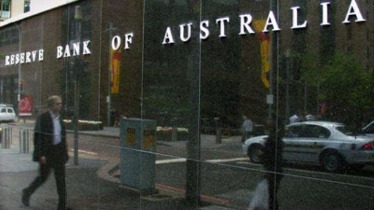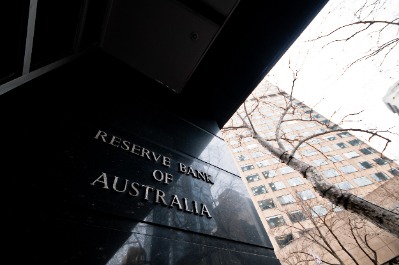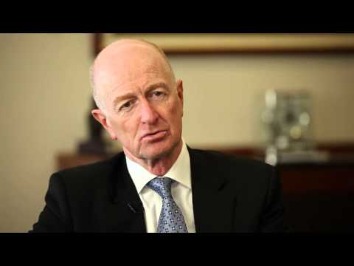Reserve Bank Of Australia Announcement
Table of Contents Heading
- April 2019 Rba Announcement On Interest Rates
- Minutes Of The February 2020 Monetary Policy Meeting Of The Reserve Bank Board
- September 2018 Rba Announcement On Interest Rates
- Cash Rate Target
- H South Pacific Central Bank Governors’ Meeting
- Aussie Dollar Firms During Lowe Speech
- Minutes Of The July 2020 Monetary Policy Meeting Of The Reserve Bank Board
“Bank funding costs in Australia have also declined, with money-market spreads having fully reversed the increases that took place last year. “Long-term government bond yields have declined further and are at record lows in a number of countries, including Australia,” he observed.
“I wouldn’t consider it an emergency, even though they are the lowest rates we’ve seen in our lifetime.” On the share market, investors are concerned it is the banks that will be short-changed, with the big four all down about 1.5 per cent in late afternoon trade.
The government then uses that money to pay for JobKeeper payments and the like — money directly into workers’ pockets. If the Reserve Bank did this it would be directly providing the government with money it’s plucked out of thin air, which the government can then spend or give to households. First let’s look at why the RBA is not buying bonds directly from the government. So basically all of this points to the fact that, in this economic climate, strong inflation is hard to come by, so even a $36 billion money printing program by the RBA is unlikely to change that.
“We have made a deliberate choice to limit the interest rate reduction to 0.15 per cent per annum on our most popular savings account, NetBank Saver.” )Commonwealth Bank passed on 19 basis points to owner-occupiers and investors for principal and interest loans, and the full 0.25 per cent cut to its interest-only loans. “On balance, we believe this is the right decision for our home loan customers and for our business.” “However, the uncertainty generated by the trade and technology disputes is affecting investment and means that the risks to the global economy are tilted to the downside.” “The outlook for the global economy remains reasonable,” Dr Lowe noted. “It will assist with faster progress in reducing unemployment and achieve more assured progress towards the inflation target,” he wrote in his post-meeting statement. The Reserve Bank has recently indicated it views a 4.5 per cent jobless rate as close to full employment.
April 2019 Rba Announcement On Interest Rates
To illustrate it he described a helicopter dropping money into people’s backyards. There are no hard and fast rules around how long quantitative easing or money printing should last. “The Bank will continue to promote the smooth functioning of these important markets. Theoretically there are no limits to how much the RBA can increase the size of its cash reserves by creating money our of thin air . If you earn money, you have the capacity to borrow money and pay it back at some point, with interest. Earlier this week I wrote about the Reserve Bank’s decision to start printing money. The 10-year bond yield traded at 0.80 per cent before the RBA’s decision.
And, as long-expected, from tomorrow it’ll begin so-called quantative easing, buying government bonds from investors to force cash into their hands (and force down a range of long-term rates as a by-product). To make sure banks can get money at that rate, the Reserve Bank is going to hand it to them. For anyone thinking of borrowing at the ultra-low rates , it provides something close to a guarantee of no upward surprises for as far as the eye can see.
- Commonwealth Bank chief executive Matt Comyn said the bank had expanded support for small businesses and households in response to the RBA announcements.
- He said he wasn’t confident rates would stay at a consistent level for 10 years.
- Commonwealth Bank is down 0.1 per cent to $80.74, NAB is 0.2 per cent lower at $29.63, Westpac has rallied by remains 0.3 per cent lower at $29.56 and ANZ is down 0.2 per cent to $28.47.
- “How much we need to purchase, and when we need to enter the market, will depend upon market conditions and prices,” he said.
- The Board does not expect these conditions to be met until 2024 at the earliest.
- Motley Fool contributor Bernd Struben has no position in any of the stocks mentioned.
“Particularly given it is currently not feasible to pass on the full rate reduction to more than $160 billion of our deposits which are at, or near, zero rates,” Retail Banking Services group executive Angus Sullivan said. On Tuesday evening, the Commonwealth Bank responded to the rate cut by announcing it would reduce its standard variable rate for home loan customers by between 0.13 and 0.25 per cent. Frydenberg urged lenders to pass on the rate cut, suggesting the full 0.25% was worth $720 a year to families with a mortgage of $400,000. He said it was “completely reckless of Labor to be talking down the Australian economy” and claimed Labor had opposed income tax cuts which, in fact, they voted for in the parliament.
Minutes Of The February 2020 Monetary Policy Meeting Of The Reserve Bank Board
Matthew Cranston is the economics correspondent, based in the Canberra bureau. The bank conducted a record $12.7 billion of these “repo” agreements on Thursday. “The Government’s actions will enable customers of smaller lenders to continue to access affordable credit as the world deals with the significant challenges presented by the spread of coronavirus,” Treasurer Josh Frydenberg said.
The Payments System Board fills the role of deciding on the bank’s payments system policy and the Reserve Bank Board is responsible for all other monetary and banking policies of the bank. Conflicts between the two Boards do not occur often and when they do, they are resolved by the governor. In practice the Reserve Bank concentrates on the first objective, that is to control inflation through monetary policy. The current objective is a policy of inflation targeting aimed at maintaining the annual inflation rate at between “2–3 per cent, on average, over the cycle”. This target was first set in 1993 by the then Reserve Bank Governor Bernie Fraser and was then formalised in 1996 by the then Treasurer Peter Costello and incoming Reserve Bank Governor Ian Mcfarlane. In August 1996, then Governor-designate Ian Macfarlane and the Treasurer issued a Statement on the Conduct of Monetary Policy which restated the roles of the Reserve Bank and the Government of Australia.
September 2018 Rba Announcement On Interest Rates
Lowe said the bank is expecting a recovery once the virus is contained. The RBA is expecting significant job losses due to the coronavirus pandemic. Lowe is expecting a major hit to economic activity and incomes in Australia that will last for a number of months.
The Australian pound was devalued in 1931 and it ceased to be tied to the pound sterling. The Reserve Bank departed from the gold standard with the Commonwealth Bank Act 1932, which made the notes no longer exchangeable into gold and allowed the bank not to keep any gold reserves. The monetary policy of the bank from 1931 until the early 1970s had been to keep a stable exchange rate with the pound sterling. The float of the Australian dollar happened in 1983, around the same period of time that the financial system in Australia was deregulated. Administration of the banks was transferred in 1998 from the bank to the Australian Prudential Regulation Authority and the Payments System Board was created, while the bank was given power within the board in the same year. The current governor of the Reserve Bank is Philip Lowe, who succeeded Glenn Stevens as governor on 18 September 2016. Both boards consist of members of both the bank, the Treasury, other Australian government agencies, and leaders of other institutions that are part of the economy.

The Australian dollar has become a popular currency with foreign exchange traders, who value it for its ability to hedge risks associated with more broadly traded currencies. The history of the Reserve Bank of Australia’s dates back to 1911 when legislation established the Commonwealth Bank of Australia, a decade after the country achieved independence from Great Britain.
Cash Rate Target
For many mortgage holders, the difference could be just a few more dollars in your pocket every month. If your bank passes the full rate cut on – and that is an “if” – the average mortgage holder could have an extra $33 a month. Typically when the RBA lowers interest rates, Australia’s major lenders follow. Australia’s interest rate – also known as the country’s “cash rate” – is the amount of money every bank has to pay on the money it borrows. “Some of the banks have already priced in today’s announcement by the Reserve Bank, it had been highly forecast and highly expected.” Economists of the Reserve Bank of Australia today decided to slash rates in a bid to stimulate the country’s economy out of a COVID-19-driven recession.

“Asset purchases — also known as quantitative easing — involves the outright purchase of assets by the central bank from the private sector with the central bank paying for these assets by creating ‘central bank reserves’. You’d just sit at home, go to your balance sheet and change your $10,000 in the bank to $100,000. You could buy more stuff then using your debit card — no need to print your own money. It’s like a scene out of the Italian Job, but it’s actually a pretty standard Reserve Bank procedure — the truck is delivering cold hard cash to the central bank. The risks of loss from investing in CFDs can be substantial and the value of your investments may fluctuate.
H South Pacific Central Bank Governors’ Meeting
NAB also announced a 19-basis-point reduction across the board on its variable home loan interest rates, following on from its 25-basis-point reduction in June. ANZ variable home loan customers did not receive the full 25-basis-point rate cut in June, with the bank criticised for only passing on 18 basis points, but they will receive this month’s rate cut in full. ANZ was the first major bank to react, announcing it would pass on the 25-basis-point rate cut in full to all of its variable home loan customers. In my conversations with the bank CEOs and chairman they have made it clear that some of their funding costs have come down. He said employment growth has been strong and the central scenario remains for the Australian economy to grow by around 2.75% for 2019 and 2020.

He said the reality was there would be a rise in the unemployment rate but that he hoped it would be a temporary event. Dr Lowe said the bank was prepared to step in if there were weak liquidity conditions. It said while conditions have been weak so far, they haven’t seen liquidity thin enough to justify intervening. The Australian’s Patrick Commins has what the RBA can do to address other economic concerns such as the rising housing market. He’s said he think it doesn’t pose a risk given the volatility in the market anyway. He said he’s prepared to buy bonds right across the maturity structure.
Aussie Dollar Firms During Lowe Speech
Reserve Bank governor Philip Lowe said the action was taken primarily to lower the cost of borrowing to stimulate the economy. The central bank has also reduced the rate paid on commercial bank deposits in exchange settlement accounts to 0 per cent, from the current 0.10 per cent. Weekly purchases of around $5 billion will be conducted in the market with the allocation of bond purchases planned to be around 80 per cent commonwealth bonds and around 20 per cent state government bonds. The major banks are still trading slightly weaker but have moved higher following the rate call. And AMP’s Shane Oliver is reiterating his previous forecast that the cash rate will be 0.25 per cent by February. “Given that a weaker currency is a key channel through which monetary policy benefits the Australian economy, the RBA will likely see the recent weakness as being helpful in terms of reaching ‘full employment’ and ‘the inflation target’.”
The Reserve Bank has cut interest rates to a record low 0.25 per cent and announced extraordinary measures to help prevent a coronavirus-driven recession. The lower the interest rate on a loan you have with a financial institution, the less money you have to pay back. In January 2020, the official cash rate was 65 basis points higher at 0.75 per cent.
Minutes Of The July 2020 Monetary Policy Meeting Of The Reserve Bank Board
Motley Fool contributor Bernd Struben has no position in any of the stocks mentioned. The Motley Fool Australia has no position in any of the stocks mentioned. Tomorrow, Lowe is scheduled to address the National Press Club in Canberra.
Labor seized on the rate cut, with the shadow treasurer, Jim Chalmers, arguing “if the Liberals were doing a good job managing the economy the Reserve Bank wouldn’t have needed to cut interest rates to another new record low today”. Lowe said the Australian economy “has spare capacity and lower interest rates will help make inroads into that”. “The low level of interest rates, recent tax cuts, ongoing spending on infrastructure, signs of stabilisation in some established housing markets and a brighter outlook for the resources sector should all support growth,” he said. Lowe said it was “reasonable to expect that an extended period of low interest rates will be required”, suggesting the RBA is “prepared to ease monetary policy further”. The RBA’s cut marked the third reduction in the cash rate in five months. The long-expected move follows months of signals from governor Philip Lowe that the Reserve Bank was prepared to push rates lower to increase employment and lift stubbornly low inflation back into the 2-3% target band.
Credit Suisse’s chief operating officer Pierre-Olivier Bouee has resigned with immediate effect in the latest twist of the spy scandal rocking the Swiss banking world. Citi economist Josh Williamson said the statement hadn’t been strong enough to bring forward his forecast.
But the coronavirus had then “significantly disrupted this momentum”, he said. Monetary policy is powerless to fix the supply-side problems caused by coronavirus, which is estimated to wipe 0.5% off Australia’s output in the March quarter alone through its impact on education and tourism, the Reserve Bank has warned. Australia’s economy beyond this month, the Reserve Bank deputy governor has warned. Traders should consider recent interest rate changes when deciding whether or not to open a position. They could try to make predictions about the interest rate ahead of the announcement to capitalise on short-term price fluctuations and boost profit. The RBA cash rate is currently 1.5% and has remained unchanged since August 2016.
Iso 20022 Migration For The Australian Payments System
Prime Minister Andrew Fisher, whose government created a commercial bank owned by the government, but not a central bank. From the middle of the 19th century into the 1890s, the prospects for the forming of a national bank grew. In 1911, the Commonwealth Bank was established, but did not have the authority to print notes, which was a power that was still reserved to the Treasury. AUD Reserves million USDReserve requirementsNoneInterest rate target0.1%Website Reserve Bank of Australia is Australia’s central bank and banknote issuing authority.
Banks have sometimes claimed that their costs are not reduced by such cuts and therefore can’t afford to pass them on to customers. Following the Reserve Bank’s cash rate decision, we will reduce all of our Standard Variable Rate home loans by 0.25% p.a. Also, by holding back 7 basis point ANZ is set to rake in $152.5m over the year. Philip Lowe will make a speech in Sydney tonight which might shed more light on how he sees rates panning out.
What Is The Rba Monetary Policy Meeting?
Read moreDr Lowe said he would not speculate on other measures, but “nothing’s off the table”. The Reserve Bank would want to see that rate, and be within its inflation target, before changing its position on interest rates, he said. Australia’s economy continues to rapidly deteriorate, and panicked investors have wiped billions of dollars of value off the local stock market. “Even if passed on fully, a cut of 0.15 per cent to the average $400,000 over 30 years will lower the monthly repayment by $33, not enough to make much of a difference to borrowers’ spending and house purchase intentions.” Emma Di Francesco, 22 and Daniel George, 23 were first homebuyers in 2018. They are the demographic most likely to benefit from low interest rates.

